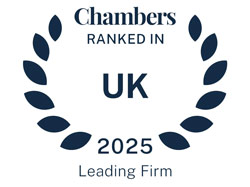Top ranked special educational needs solicitors

This article was written during the coronavirus outbreak in May 2020. Please note that the updated Government guidance at the time did not alter local authorities’ duties in terms of Section E outcomes.
In the Education Team at Boyes Turner, we see a lot of Education, Health and Care Plans (EHCPs) which require the special educational needs (Section B) and special educational provision (Section F) to be updated and improved. Whilst Section F provision is there to meet the Section B needs, Section F provisions are also required to work towards, and ultimately achieve, the outcomes (Section E). An ‘outcome’ is the benefit or difference made as a result of an intervention (para 9.66 SEND Code of Practice 2015).
So, how important are these Section E outcomes and what do you need to know about them when checking your child/young person (YP)’s EHCP?
Section E outcomes should change and adapt throughout the life of an EHCP to reflect the changing needs and progress of the child/YP. Outcomes are divided into short-term and long-term, with the latter usually lasting until the end of the academic year/key stage/next stage of education. So it would be inappropriate to have an outcome to be achieved by the end of Key Stage 1, when the child is due to begin secondary school. Therefore, it is important that the outcomes are reviewed and updated as necessary at each Annual Review of the EHCP. Your child/YP’s school and professionals involved should be well placed to comment on any updates.
Another requirement is for these outcomes to be SMART:
- Specific
- Measureable
- Achievable
- Realistic
- Time-bound
We frequently come across outcomes which do not meet some or all of these requirements. This makes it difficult for schools and the professionals involved to assess if the child/YP has made progress to, or indeed achieved, the outcomes listed. This then risks outcomes remaining in the EHCP without being appropriately updated.
We also very often see local authorities wanting to include provision in these outcomes, for example: “John will have weekly speech and language therapy to improve his communication skills.” Here, we would comment on the need to remove the method for improving his communication skills (the weekly speech and language therapy) and add much more detail to the outcome itself:
- What will John be able to do as a result of improving his communication skills? Will he, for example, be able to maintain a two-way conversation with a peer which he cannot do now?
- By what point in time will John have improved his communication skills to be able to maintain a two-way conversation? Will this be by the end of the academic year, end of the key stage?
- Also, consider how often will John be able to achieve this two-way conversation, will it be every day/every week?
Revised wording for this outcome could therefore be: “By the end of Key Stage 2, John will be able to maintain a two-way conversation with a peer each day.”
Whilst there is no limit on the number of outcomes that can be included in Section E of an EHCP it is important to bear in mind what your child/YP’s school/college placement will reasonably be able to work towards. Outcomes should cover the range of child/YP’s special educational needs as per the following categories:
- Cognition and learning
- Communication and interaction
- Social, emotional and mental health
- Sensory and physical
It is important to make sure that the outcomes are not all focused on one particular area of need. The ultimate aim of Section E outcomes is to prepare the child/YP for adulthood and should be focused on education and training for that child/YP.
When a YP reaches Year 9 the outcomes must also reflect their preparation for adulthood and what the YP would like to do, whether that is engage in further education, training or working towards some form of employment.
It is also important that there are appropriate and updated SMART outcomes for the child/YP’s health and social care needs too.
If you disagree with the outcomes in your child/YP’s final EHCP it is important to remember that they cannot be directly challenged through an appeal to the Special Educational Needs and Disability Tribunal. However, an appeal does allow both parents/YP and the local authority opportunity to update the Section E outcomes if, for example, you have updated therapy evidence. Whilst the local authority does not have to agree to these we find that local authorities can agree depending on the outcomes being asked for and the evidence to support these. The Tribunal can also make decisions during the course of an appeal in relation to Section E but only when such decisions are directly impacted from an amendment to Section F.
When a local authority is considering whether to stop an EHCP (cease to maintain) one of the factors they must consider is if the Section E outcomes have been achieved. This reinforces the need for the outcomes to remain appropriate and to be kept updated through Annual Reviews.
So, whilst Section E outcomes may not, on the face of it, seem like a key Section of your child/YP’s EHCP, the outcomes are in fact central to having an up to date and reflective EHCP for the particular child/YP.
Boyes Turner Education Team can help review your child/YP’s EHCP and advise on the Section E outcomes, and can be contacted on senexpertsolicitors@boyesturner.com or 0118 952 7219.
I am so happy at the outcome, I don't think we would have had such a comprehensive service from any other law firm, and you took the worry away...I do not regret a single second of the whole process, apart from the bit before you got involved.
James' mother, Boyes Turner client
Contact our expert specialist education solicitors today for support with your claim



